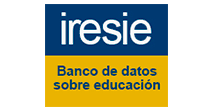PUBLIC POLICIES FOR BILINGUAL EDUCATION: CHALLENGES FOR TEACHER TRAINING
DOI:
https://doi.org/10.5216/ia.v47i2.71152Abstract
In recent decades, bilingual education has grown exponentially in private schools, and more recently in public schools. Thus, this article aims to analyze policies in the national, state and local context for bilingual education from the theoretical perspective of curriculum internationalization (LEASK, 2013). For policy analysis, we used the bilingual education models proposed by Hornberger (1991). It is an approach, qualitative and documentary research. The data point to a conceptual limitation in public policies for bilingual education. It is also possible to observe the presence of two dominant models, that of maintenance and that of enrichment, promoting the preservation of minority immigration languages, and cultural pluralism. The need to broaden the debate in teacher education is highlighted.
KEYWORDS: Bilingual Education. Teacher Training. Official Documents. Internationalization of the Curriculum. Public Policy.
Downloads
Published
How to Cite
Issue
Section
License
Copyright (c) 2022 Isabela Vieira Barbosa, Marcia Regina Selpa Heinzle, Leticia Zimmermann

This work is licensed under a Creative Commons Attribution-NonCommercial 4.0 International License.
Inter-Ação uses the Creative Commons Attribution 4.0 License for Open Access Journals (Open Archives Initiative - OAI) as the basis for the transfer of rights. Open access means making documents available on the Internet free of charge, so that users can read, download, copy, distribute, print, search, or link to the full text of documents, process them for indexing, use them as input data for software programs, or use them for any other lawful purpose, without financial, legal, or technical barriers.
Authors publishing in this journal agree to the following conditions:
1) Authors retain copyright and grant the journal the right of first publication, with the work simultaneously licensed under the Creative Commons Attribution License, which permits redistribution of the work with attribution and first publication in this journal.
2) Authors are permitted to enter into additional, separate agreements for non-exclusive distribution of the version of the work published in this journal (e.g., for publication in an institutional repository or as a book chapter), with attribution and first publication in this journal.
3) Authors are permitted and encouraged to publish and distribute their work online (e.g. in institutional repositories or on their home page) at any time before or during the editorial process, as this may generate productive changes as well as increase the impact and citation of the published work.















